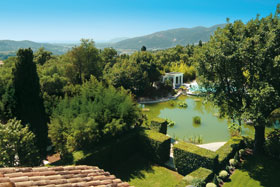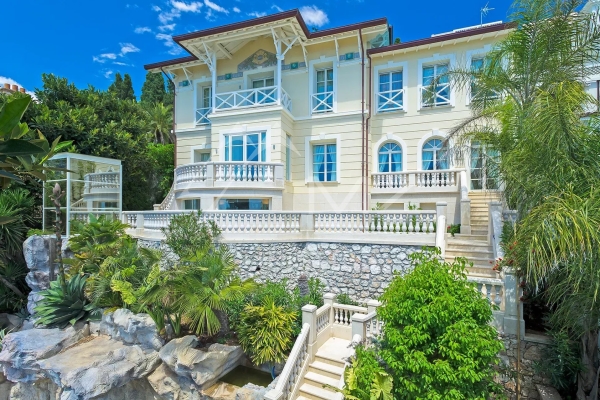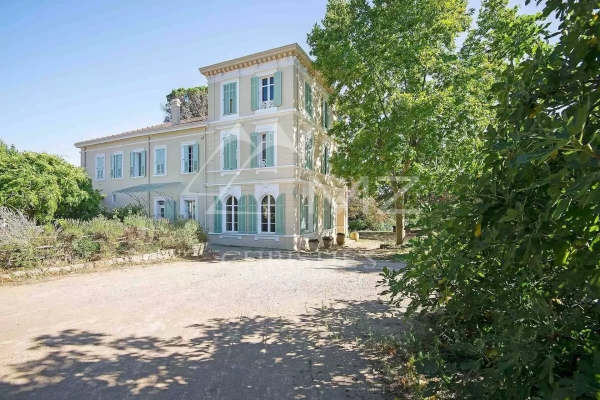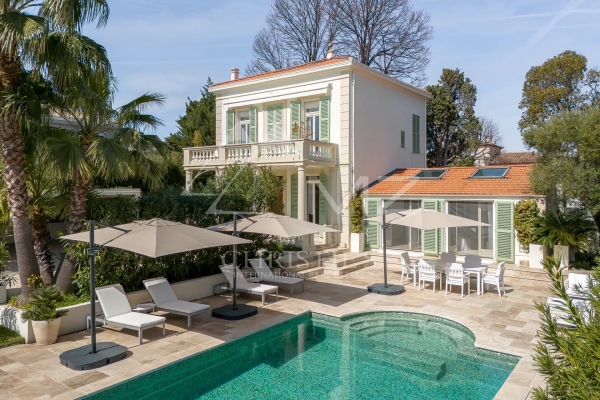A chateau at Auribeau-sur-Siagne
Currently offered for sale, the Château de Clavary bids us welcome.
Some places are full of secrets. Here, on the commune next to that of Grasse, history goes hand-in-hand with majesty. Currently offered for sale, the Château de Clavary bids us welcome.
Of the origins of the Château de Clavary, only the date is known : 1820. The rest is all supposition. The property’s name apparently had something to do with “lou clavaire” (pronounced “clavaï”), ie. tax collector. We also know that the original estate was much larger than it is today. The 75 or 100 acres of which it was originally comprised were divided up in 1984, on the death of Peter Wilson, a major shareholder in Sotheby’s. Before him, the artist Russell Greeley had owned the castle since 1925. This native of Boston, a graduate of Harvard, spent many happy years here with his friend, the artist François de Gouy d’Arcy. Together, they entertained all the intelligentsia of the 20th century. In an autobiography published in 1932, the English painter Nina Hamnett mentioned the Château : “On my first visit, I thought I was stepping into paradise”. She remembered a visit paid by Stravinsky and their sampling caviar, and the time when Poulenc came to stay, which turned out to be particularly propitious for musical composition. The list of guests who followed in each others’ footsteps at Clavary until 1938 is enough to make one dizzy : Brancusi, van Dongen, Marie Laurencin, Fernand Léger, Man Ray, Picabia, Dunoyer de Segonzac, Isadora Duncan, Cocteau, Max Jacob, Paul Valéry… Just before he passed away in 1973, Picasso wanted to take a last look at the mosaic he had created for the reception hall many years earlier.
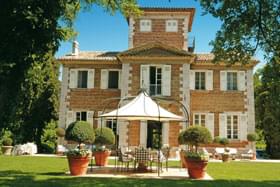
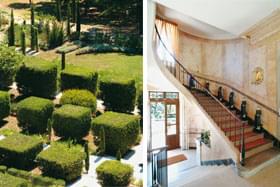
Two sturdy stone columns mark the entrance to the property. Approaching the Victorian building along a paved road lined with cypress trees, you are immediately struck by the perfect symmetry of the design and the details in the construction, decorated with reddish pebbles. The courtyard revolves around a fountain, set in front of the entrance door just like the access drive.
Opening out on various sides, the reception area plays host to Picasso’s mosaic. While this work in black and white calls for your attention, it has to compete with the garden which one glimpses through a second door. As if by magic, you find yourself outside again, this time in front of the château. Here, the drive with its cypresses continues for another 100 metres as if it had run through the building and swapped its paving for a finely trimmed lawn. At the end, you make out a second fountain, said to have come from a square in Aix. It soon becomes clear that water plays the starring role in this botanical Eden. The swimming pool flows into a pond, situated on the path taken by wild ducks. Water-lilies, a little bridge and a teak deck add their touches of exoticism. Just like the copse of bamboo which separates this area from a classic French garden where a second pond recalls the atmosphere of Versailles. Further on, a stream winds its way to the middle of a Japanese garden. The wind stirs gigantic standards flaunting printed veils… Chinese prayers, apparently.
A gravel path brings us back to the château, running parallel to the first alley and another identical road on the far side. Decidedly, nothing has been left to chance : the landscaping obeys rigorous geometry. To the right, the guest house and rose garden rub shoulders with a contemporary mineral world, crowned by a third pond. The designer has ensured that, once a year, when there’s a solstice, the sun sets here after shedding its glow on the arcade comprising the summer dining-area. Walking past a large cask, probably from a perfumery in Grasse, you discover an area dedicated to succulent plants. Here, a folly ; there, statues from a park in New York, a small pond, a boxwood maze, a chapel where mass is still celebrated… The landscaper has gone for effect, playing on colour and matter, breaks in rhythm, different reliefs. The eye wanders back and forth between the tall trees and low-level vegetation before allowing the overall harmony to express itself freely. This is undoubtedly one of the loveliest private parks in the entire region.
Two hours later, it finally appears… The view, so highly-prized in property acquisition, has become quite discreet before so much natural beauty. Set on the top of a hill, the château opens out to the plain below Grasse, the hills of Cabris and the sea. Suddenly, one notices the Saint-Jacques-du-Couloubrier Foundation. The former property of Jacques Prouvost shares the limelight with the Château de Clavary and Saint-Mathieu-du-Couloubrier, once owned by the CEO of Agip.
Nobility also makes itself felt inside the main residence : “trompe-l’œil” marble on all the walls, painted wooden doors and a flight of stairs enhanced by mandarins. No ostentatious luxury, rather an old-fashioned charm. Only the entrance hall separates the lounge from the dining-room. Painter Jean Hugo called the nerve-centre of this incredible symmetry “the smoking room”. The two upper floors play host to the bedrooms.
By Laetitia Rossi - Photos : Edith Andreotta
